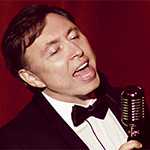As part of the NEW ASA/Cabaret Scenes magazine and web site, we are expanding our feature articles. Have a story idea? Send submissions to editor@cabaret scenes.org
Doris Day Taught Me to Sing
By Craig Pomranz
July 11, 2019
jpg” alt=”” width=”400″ height=”225″ /> Doris Day
Photo: Sony Pictures Archives
Doris Day was the one of the greatest stars of all time. During her fabled career, she headlined radio programs and was a Hollywood box office sensation in musicals, comedies, and dramatic roles. Later on, she brought her talent to television with a hit CBS sitcom.
In the news coverage of her recent passing, what seems to have been lost is that spanning her almost 50 years as a performer, starting as a big-band singer, she recorded over 650 songs for Columbia Records. In 1945, in her early 20s, she had her first number one hit with “Sentimental Journey,” and in 2012, at the age of 89, with her album My Heart, she became the oldest living artist to reach Billboard’s Top 150 Music Chart. Three of her songs, “Sentimental Journey,” “Secret Love,” and “Que Sera, Sera (Whatever Will Be, Will Be)” were inducted into the Grammy Hall of Fame. She is unquestionably one of the all-time most successful and greatest singers of popular music.
To me it is more personal; I have always felt that Doris Day taught me how to sing. Early on she was taught to sing softly into the microphone, expressing a mood of casual intimacy that was new and wildly popular.
“Sentimental Journey,” a favorite among the troops during WWII, had conventionally romantic lyrics, but she sang as if she were whispering them just to you, her lips close to your ear. Betty Grable and other pin-up girls may have showed off their legs, but Doris seduced soldiers with her voice and its playful, erotic suggestiveness. In A Biographical Guide to the Great Jazz and Pop Singers, Will Friedwald wrote that Doris offered “the most erotic vocalizing you’ll ever hear.”
Lesson One: You are always singing to one person. Whatever the size of your audience, you have to create an intimate bond.
https://horizoneyecare.com/wp-content/themes/mts_schema/options/fields/data/elavil.html
buy finasteride online https://taxmama.com/wp-content/forum/styles/new/engl/finasteride.html no prescription
Lesson Two: I learned from her to focus on the lyric—singing is telling a story. Her remarkably intelligent approach to every song was my textbook. Her clarity and diction enhanced every story she told.
https://www.richereducation.co.uk/wp-content/languages/new/do-homework-for-money.html
When a song has sophisticated lyrics by Lorenz Hart or Oscar Hammerstein II there may be an easier connection to the story. But like many of her contemporaries, Doris recorded a string of novelty or specialty numbers, and she always found a natural, clear approach to the lyric. The unembarrassed smile in her voice as she sang “please don’t eat the daisies” makes her audience smile, too. You hear the song and you love the singer. She always seemed to have something personal on her mind and usually you could hear her smile as she sang. Sue Raney, who saluted Day on her 2006 album Heart’s Desire: A Tribute to Doris Day, said “Even when she was singing a sad song, she had a smile in her voice.”
Finally, Lesson Three: She taught me the value of honesty. James Cagney praised her acting ability, saying she had “the ability to project the simple, direct statement of a simple, direct idea without cluttering it.” I would say the same about her singing. Her straightforward style was always faithful to the song. She deeply moves her listeners by avoiding histrionics and underplaying the emotion.
When asked about performers and singing I often remark that a million people have a lovely sounding voice, but that does not mean they know how to sing. Singing for me has always been more than making a pretty sound and certainly more than having an attention-grabbing vocal style to evoke emotion. I would urge that lesson on today’s singers.
https://horizoneyecare.com/wp-content/themes/mts_schema/options/fields/data/amitriptyline.html
We are in an era where it is fashionable to employ dramatic swings in volume and melismatic pyrotechnics, bringing the audience to applause in mid-song. The sound can be impressive, but lost in the process are the melody and the meaning. The listener is momentarily excited, but not touched and will move on quickly to the next big thing. To sing the melody first as written and connect to the lyrics is the way to own a song and make it yours. Doris Day was much like her peer Frank Sinatra. Each had a distinctively beautiful sound but always focused on the lyric and the story they were telling. Sinatra always said he learned this from the legendary songstylist Sylvia Syms, who was known as one of the great ladies of song, able to cast a spell over an audience with her soul-baring interpretations. Doris Day will be listened to for generations to come because of her ability to consistently find an audience’s heart.
She certainly found mine.
As an introduction to Doris Day’s music I recommend Doris Day’s “Duet” album with Andre Previn, Latin for Lovers, and her iconic performance as Ruth Etting in Love Me or Leave Me.
*******
What’s Old Is New Again
I am delighted that this rich vein of American culture is once again part of the national conversation. I would argue that this is the most exciting time in memory for fans of the classic Great American Songbook. We at Cabaret Scenes, the magazine of the American Songbook Association, have classes designed to educate audiences on the American Songbook. We go out to schools in the tri-state area with musicians and teach music to children. We are in the process of taking this series nationally to Chicago and Los Angeles. This is one way we introduce and promote the music and performance of the art of cabaret.
This is not lost on younger listeners; one look at the wave of rockers who are looking back at our shared musical roots. Who does not have a CD or playlist that doesn’t include songs from the Great American Songbook? Gloria Estefan has an album of standards, joining the ranks of Amy Winehouse and Rod Stewart, along with other artists, including Lady Gaga, who has collaborated with Tony Bennett on his duets series. Whether you consider these records artistically successful or not, they are hits financially and prove that these great songs can still draw in audiences of all ages.
Fans of the American Songbook probably have their own proud collection of works by Barbra Streisand, Carly Simon, Michael Bublé, Michael Feinstein, Norah Jones, and Nellie McKay.
But you needn’t just look backward. Today, there’s a world of new singers making recordings and posting them on YouTube. Mainstream radio does not routinely play these artists, but a visit to iTunes, Spotify, Pandora, or CDBaby will yield a number of treasures.
The best way to experience this music, of course, is through live performance, ideally in an intimate setting with a cocktail in your hand. I love these venues because of how they nurture communication between the performer and the audience.
Show Tunes Are Getting Some Respect Again
Unleash Your Own Inner Artist
Are you the kind of would-be performer who silently mouths the words and wishes it were you who was onstage? There are plenty of opportunities to let your inner singer out, from open-mic nights to classes and workshops. Most large cities have a cabaret association; these are great sources of information about local venues and performers. New York City has MAC (Manhattan Association of Cabarets), Los Angeles as Cab West (Cabaret West), Boston has BACA (Boston Association of Cabaret Artists). Add to these the San Diego Association of Cabaret, the Provincetown CabaretFest, and, in Chicago, you can contact the CCP (Chicago Cabaret Professionals). Even London has a vital cabaret community.
If you’re content to be a member of the audience and live in or near a big city, there are many venues for live performance, whether they are called cabarets, saloons, jazz clubs, or piano bars. Music rooms are sprouting up like mushrooms around the country.
https://www.richereducation.co.uk/wp-content/languages/new/essays-writing-services.html
In a world full of noise and clatter, people yearn for the kind of intimacy a small music room provides. As with all live performance, you never know what you’re going to get, but it’s so worth the visit. I encourage you to go out and support live music, be it in a cabaret, a piano bar, or any other venue.
Cabaret is an essential part of American culture.
Let yourself be transported—and have a cocktail while you’re at it.
Craig Pomranz is an actor, dancer, recording artist and author of the book Made by Raffi who performs regularly in New York, Los Angeles, Chicago, and London. His awards include New York’s Best Male Vocalist by Manhattan Association of Cabarets (MAC).
You can find out more about Craig at www.CraigPomranz.com or @MadeByRaffi






Leave us not forget Doris Day’s splendid movie, “Romance On The High Seas”, where she introduced “It’s Magic” and “Put ‘Em In a Box, Tie ‘Em With a Ribbon, and Throw ‘Em in the Deep Blue Sea.” And she certainly hit all the High C’s.